Mt. Fuji and Environs Hakone, KANAGAWA 4 Days 3 Nights
- Day 1
- Tokyo – Mt. Fuji – Hakone
Travel from Tokyo to Mt. Fuji by private car.
Continue on your way by driving the scenic Fuji Subaru Line up to Mt. Fuji 5th station. This is a great place for sightseeing, with incredible views of the surroundings. People who climb the mountain often start their trek here. This 5th station is also known as Yoshidaguchi 5th station and is the most popular station of Mt. Fuji because of its easy access.

In summer, climbing up to the top of Mt. Fuji is very popular for both Japanese and foreigners. Especially popular is to climb through the night to see the sunrise from the summit. Mt. Fuji is considered one of the “Three Holy Mountains” along with Mt. Tate and Mt. Haku, and is a symbol of Japan, registered as a UNESCO World Heritage site along with its environs.
At the mountain’s base is the beautiful Fujiyoshida Sengen Shrine, dedicated to Princess Konohanasakuya, the Shinto goddess of Mt. Fuji. For centuries, pilgrims have passed through the shrine and offered a prayer to the sacred mountain before continuing their trek. Behind the shrine is the Yoshida trailhead, which leads up the mountain to the summit, although most climbers start at the 5th station, which shortens the climb by about five hours.
*Advance booking is required with guide.
If you are keen to learn more about Mt. Fuji, you may join one of these three activities to discover the famous mountain.
Option 1 – Explore Mt. Fuji Lava Caves
If you want a truly special and unique experience in Japan, check out the Mt. Fuji Lava Caves. In addition to the caves, our guides will introduce you to the wonders of the famous Aokigahara forest in the Mt. Fuji foothills, with its strange, mysterious world of eerie silence, darkness and tranquility.
Option 2 – Nature walk in the forest near Mt. Fuji
The foothills of Mt. Fuji are a great place for a nature hike to learn about the fascinating birds and plants of this area. This tour is perfect for anyone interested in enjoying the natural world surrounding Mt. Fuji with a guide who is well versed in the local flora, fauna and geology. This tour can take place in various locations, depending on which is the most convenient.
*Available in summer only
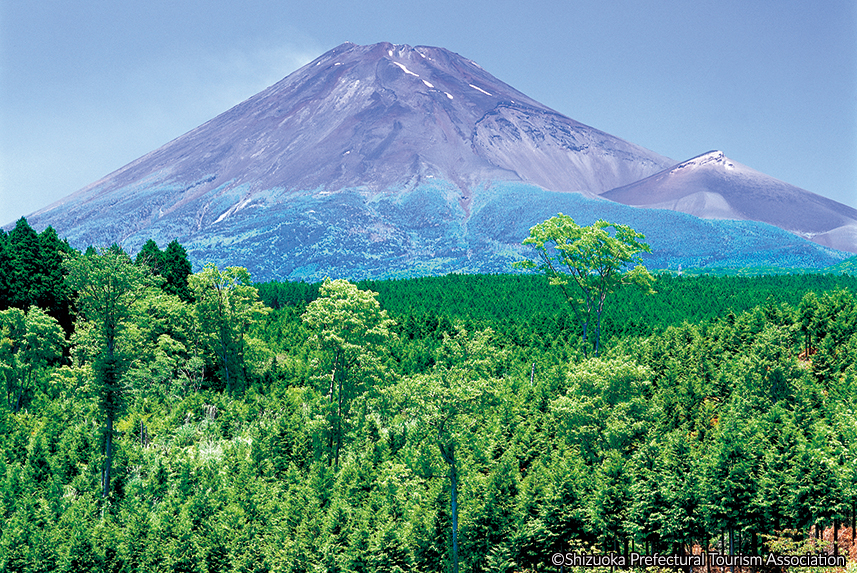
Option 3 – Trekking in Houei Crater
Though it hasn’t erupted in hundreds of years, Mt. Fuji is still an active volcano. Our Houei Crater trekking tour starts from the 5th station, from where we will hike to the 6th station and beyond to admire the magnificent views from the Houei Crater, as well as discover the tough, resilient plant life at the tree line and the craters formed in previous eruptions.
*Available in summer only
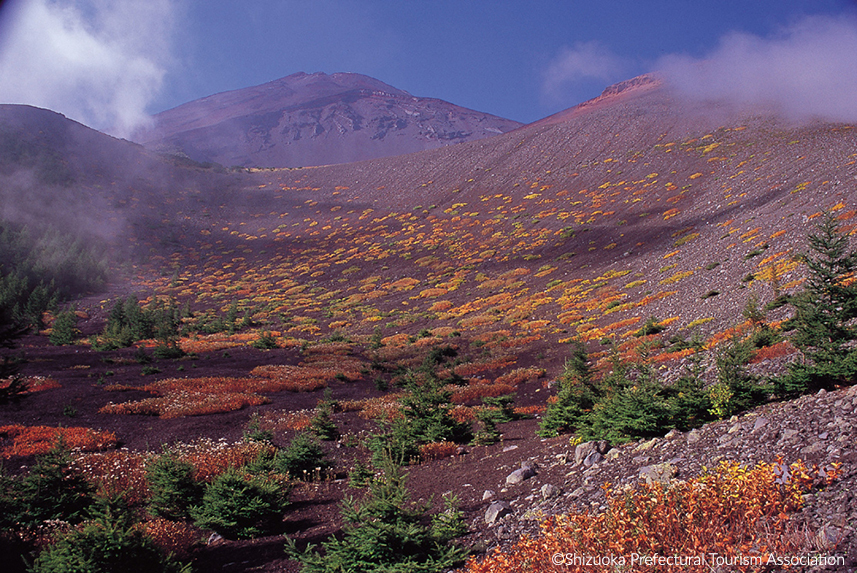
In the afternoon you will leave for Hakone, a city famous for its hot springs and beautiful views of Mt. Fuji.
Check in at the ryokan in Hakone. Ryokan Collection has several member ryokan in this area.
Gora-Kadan is located only 3 minutes’ walk from Gora Station, which is the terminal railway station of both the Hakone Tozan Line and the Hakone Tozan Cable Car. Gora-Kadan exemplifies a fusion of tradition and custom with captivating oriental charm.
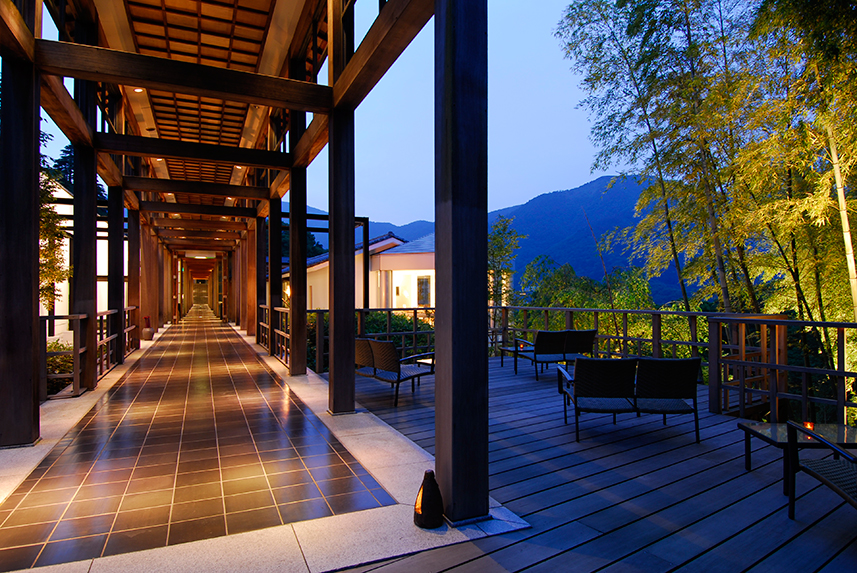
Hakone-Ginyu boasts spectacular views of the Hayakawa River as well as the Hakone Mountains set the perfect backdrop for poetic inspiration. The entrance and lobby are located on the top of the building. Hakone Tozan Line Miyanoshita station.
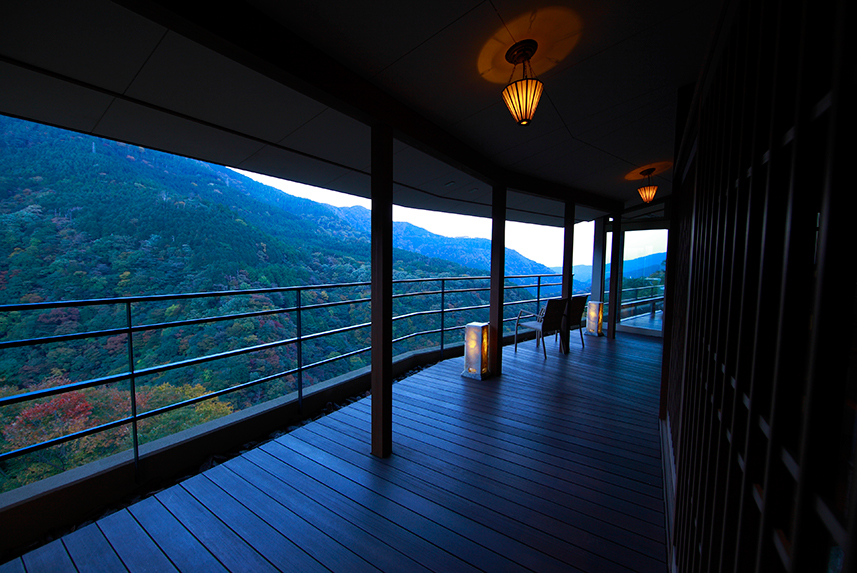
Hakone SUISHOEN is located 15 minutes’ walk from Kowakidani Station. In the central courtyard of SUISHOEN is an elegant old building that was once the country home of the Mitsui family. Built in 1925, this magnificent structure is not just beautiful - it's a piece of history, listed as a Registered Cultural Asset by the Japanese government.
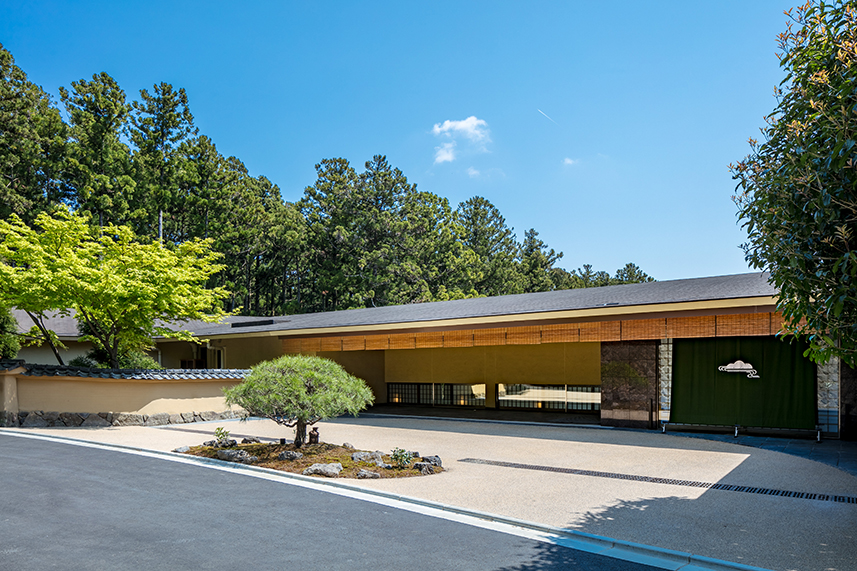
Yama No Chaya is a 10 minute walk from Tonosawa station on the Hakone Tozan Line, next stop from Hakone-Yumoto station. Along with its rustic atmosphere and friendly, family vibe, Yama no Chaya features onsen hot spring baths filled with water drawn from its own spring on the property, as well as some outstanding cuisine.
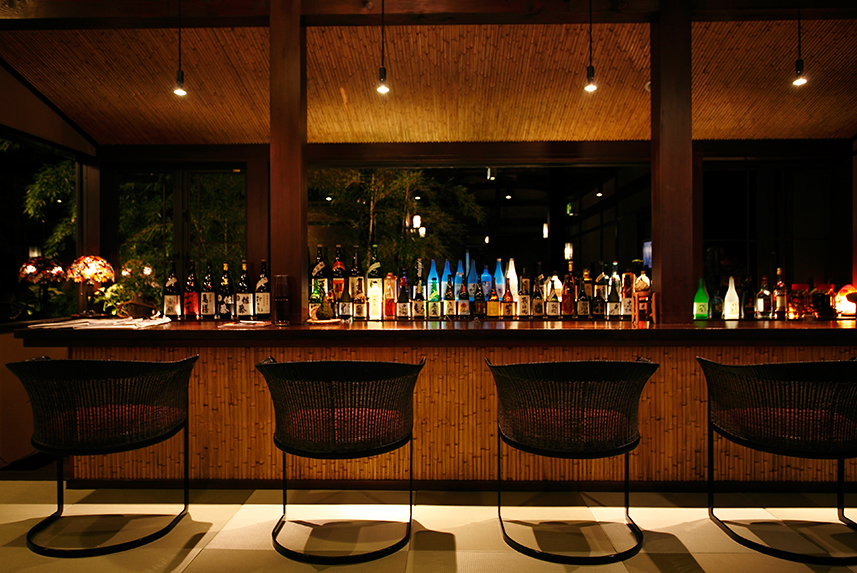

In summer, climbing up to the top of Mt. Fuji is very popular for both Japanese and foreigners. Especially popular is to climb through the night to see the sunrise from the summit. Mt. Fuji is considered one of the “Three Holy Mountains” along with Mt. Tate and Mt. Haku, and is a symbol of Japan, registered as a UNESCO World Heritage site along with its environs.
At the mountain’s base is the beautiful Fujiyoshida Sengen Shrine, dedicated to Princess Konohanasakuya, the Shinto goddess of Mt. Fuji. For centuries, pilgrims have passed through the shrine and offered a prayer to the sacred mountain before continuing their trek. Behind the shrine is the Yoshida trailhead, which leads up the mountain to the summit, although most climbers start at the 5th station, which shortens the climb by about five hours.
*Advance booking is required with guide.
If you are keen to learn more about Mt. Fuji, you may join one of these three activities to discover the famous mountain.
Option 1 – Explore Mt. Fuji Lava Caves
If you want a truly special and unique experience in Japan, check out the Mt. Fuji Lava Caves. In addition to the caves, our guides will introduce you to the wonders of the famous Aokigahara forest in the Mt. Fuji foothills, with its strange, mysterious world of eerie silence, darkness and tranquility.
Option 2 – Nature walk in the forest near Mt. Fuji
The foothills of Mt. Fuji are a great place for a nature hike to learn about the fascinating birds and plants of this area. This tour is perfect for anyone interested in enjoying the natural world surrounding Mt. Fuji with a guide who is well versed in the local flora, fauna and geology. This tour can take place in various locations, depending on which is the most convenient.
*Available in summer only

Option 3 – Trekking in Houei Crater
Though it hasn’t erupted in hundreds of years, Mt. Fuji is still an active volcano. Our Houei Crater trekking tour starts from the 5th station, from where we will hike to the 6th station and beyond to admire the magnificent views from the Houei Crater, as well as discover the tough, resilient plant life at the tree line and the craters formed in previous eruptions.
*Available in summer only

In the afternoon you will leave for Hakone, a city famous for its hot springs and beautiful views of Mt. Fuji.
Check in at the ryokan in Hakone. Ryokan Collection has several member ryokan in this area.
Gora-Kadan is located only 3 minutes’ walk from Gora Station, which is the terminal railway station of both the Hakone Tozan Line and the Hakone Tozan Cable Car. Gora-Kadan exemplifies a fusion of tradition and custom with captivating oriental charm.

Hakone-Ginyu boasts spectacular views of the Hayakawa River as well as the Hakone Mountains set the perfect backdrop for poetic inspiration. The entrance and lobby are located on the top of the building. Hakone Tozan Line Miyanoshita station.

Hakone SUISHOEN is located 15 minutes’ walk from Kowakidani Station. In the central courtyard of SUISHOEN is an elegant old building that was once the country home of the Mitsui family. Built in 1925, this magnificent structure is not just beautiful - it's a piece of history, listed as a Registered Cultural Asset by the Japanese government.

Yama No Chaya is a 10 minute walk from Tonosawa station on the Hakone Tozan Line, next stop from Hakone-Yumoto station. Along with its rustic atmosphere and friendly, family vibe, Yama no Chaya features onsen hot spring baths filled with water drawn from its own spring on the property, as well as some outstanding cuisine.

- Day 2
- Hakone
Meet with your guide in the lobby and embark by private car for a driving tour to admire Mt. Fuji.
Driving around Lake Ashi takes you to places famous for beautiful Mt. Fuji views. You will take the Toyo Tires Turnpike to see the spectacular view of Mt. Fuji over Lake Ashi. From there we will continue to the Lake Ashi Sky Line, to reach the Mikuni mountain path observatory, the perfect place to appreciate the splendor of Mt. Fuji. Panoramic views of the mountain, from base to peak, can be seen here on clear days. *Visibility of Mt. Fuji is subject to weather conditions.
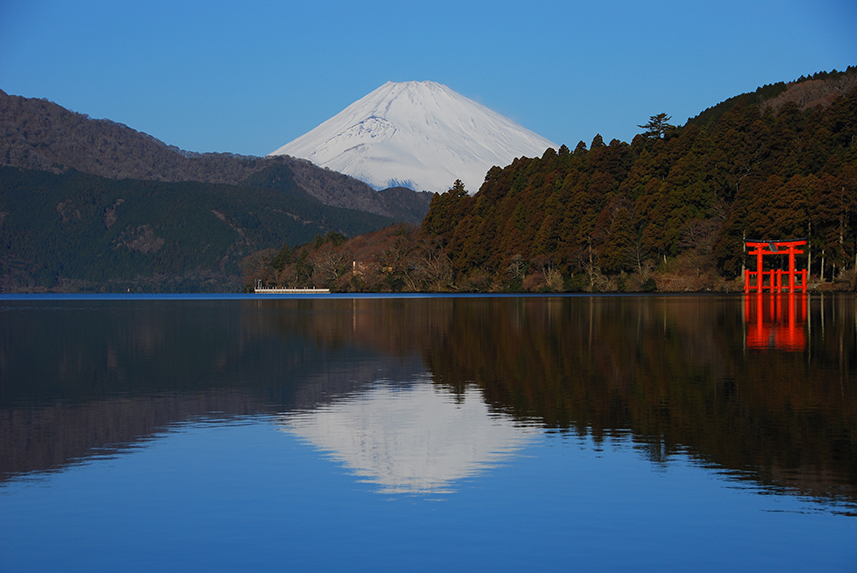
Continue on to the beautiful Lake Ashi, which is a caldera lake, formed after the last eruption of Mt. Hakone some 3,000 years ago. These days the lake, with its iconic view of Mt. Fuji in the background, is a worldwide symbol of Hakone and Japan. You can savor this famous view from a variety of viewpoints, including Moto-Hakone, the Hakone Detached Palace Garden, and of course the numerous sightseeing boats that ply the lake.
Owakudani (“Great Boiling Valley”) is a volcanic valley formed from a crater created during an eruption of Mt. Hakone about 3,000 years ago. The valley still boasts sulphur vents and hot springs, and is famous for kuro-tamago (“black eggs”), or eggs hard-boiled in the hot springs. You can enjoy truly spectacular views of Mt. Fuji on clear days from Owakudani, which is accessed via the Hakone Ropeway gondola.
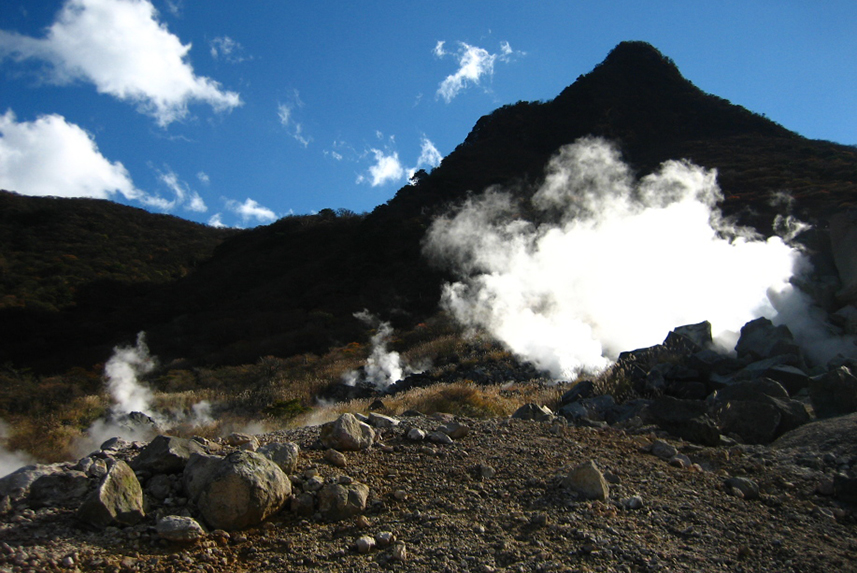
Return to the ryokan.
Driving around Lake Ashi takes you to places famous for beautiful Mt. Fuji views. You will take the Toyo Tires Turnpike to see the spectacular view of Mt. Fuji over Lake Ashi. From there we will continue to the Lake Ashi Sky Line, to reach the Mikuni mountain path observatory, the perfect place to appreciate the splendor of Mt. Fuji. Panoramic views of the mountain, from base to peak, can be seen here on clear days. *Visibility of Mt. Fuji is subject to weather conditions.

Continue on to the beautiful Lake Ashi, which is a caldera lake, formed after the last eruption of Mt. Hakone some 3,000 years ago. These days the lake, with its iconic view of Mt. Fuji in the background, is a worldwide symbol of Hakone and Japan. You can savor this famous view from a variety of viewpoints, including Moto-Hakone, the Hakone Detached Palace Garden, and of course the numerous sightseeing boats that ply the lake.
Owakudani (“Great Boiling Valley”) is a volcanic valley formed from a crater created during an eruption of Mt. Hakone about 3,000 years ago. The valley still boasts sulphur vents and hot springs, and is famous for kuro-tamago (“black eggs”), or eggs hard-boiled in the hot springs. You can enjoy truly spectacular views of Mt. Fuji on clear days from Owakudani, which is accessed via the Hakone Ropeway gondola.

Return to the ryokan.
- Day 3
- Hakone
Today you may relax at the ryokan. Otherwise you may visit some sightseeing spots by taking public transportation.
Hakone has a variety of museums in the area. The Hakone Open-Air Museum and the Okada Museum of Art are especially recommended. They are close to each other, 15 minutes apart on foot.
The Hakone Open-Air Museum is a spectacular facility, featuring artworks by Picasso, Henry Moore, Churyo Sato and many others. Many of the sculptures are displayed outdoors in a unique natural setting. The museum has over 1,000 artworks in total.
The Okada Museum of Art, which opened in 2013, is an airy, spacious building, with exhibits of Asian art, mostly Japanese, Chinese and Korean, from ancient times to the present. The art is from the collection of Kazuo Okada. You can stroll through the spacious gardens, and then rest your feet in hot spring footbaths while enjoying a drink. The restaurants next door to the museum are excellent, as well.
You may extend your way to visit Daiyuzan Saijo-ji temple, in the town of Minami Ashigara. This incredibly beautiful but relatively unknown – even to Japanese – temple is nestled amongst rich nature, with lovely, peaceful, beautifully kept grounds and timeless Buddhist architecture.
Hakone has a variety of museums in the area. The Hakone Open-Air Museum and the Okada Museum of Art are especially recommended. They are close to each other, 15 minutes apart on foot.
The Hakone Open-Air Museum is a spectacular facility, featuring artworks by Picasso, Henry Moore, Churyo Sato and many others. Many of the sculptures are displayed outdoors in a unique natural setting. The museum has over 1,000 artworks in total.
The Okada Museum of Art, which opened in 2013, is an airy, spacious building, with exhibits of Asian art, mostly Japanese, Chinese and Korean, from ancient times to the present. The art is from the collection of Kazuo Okada. You can stroll through the spacious gardens, and then rest your feet in hot spring footbaths while enjoying a drink. The restaurants next door to the museum are excellent, as well.
You may extend your way to visit Daiyuzan Saijo-ji temple, in the town of Minami Ashigara. This incredibly beautiful but relatively unknown – even to Japanese – temple is nestled amongst rich nature, with lovely, peaceful, beautifully kept grounds and timeless Buddhist architecture.
- Day 4
- Departure
Check out from the ryokan and travel back to Tokyo.
Hakone is one of the closest onsen resorts to Tokyo, a quick 30 minute ride on the Shinkansen bullet train from Odawara Station to Tokyo Station.
You may also travel to Kyoto by Shinkansen from Odawara station, 2 hours.
Hakone is one of the closest onsen resorts to Tokyo, a quick 30 minute ride on the Shinkansen bullet train from Odawara Station to Tokyo Station.
You may also travel to Kyoto by Shinkansen from Odawara station, 2 hours.







